Lectures in your own time, Come Learn Together
Contents
Introduction
Flipped Classroom (FC) and Team-Based Learning (TBL; Michaelsen, Knight, & Fink, 2002) are two teaching pedagogies that have gained popularity in recent years; both aimed at increasing students’ engagement in active learning and accountability in their own learning, as well as more strategically using in-person class time for higher-order learning rather than passively sitting and listening to lectures. While there are many overlaps and similarities between the two approaches, it is worth noting that FC and TBL are not identical pedagogies (e.g. flipped classroom focuses on digitally “lecturing” online before in-person class time, while there is not a specific emphasis within the TBL approach on how the pre-class preparation is delivered to students) (Wallace, Walker, Braseby, & Sweet, 2014).
This case study aims to offer guidelines and suggestions on how I integrated flipped classroom and team-based learning within the context of an undergraduate developmental psychology course at Fayetteville State University.
Objectives
This case study will include:
- Steps and specific examples of how to redesign a course by flipping the content and incorporating TBL elements in the in-class activities
- Insights gained by incorporating FC & TBL,
- Strategies for how other educators may adopt this framework for redesigning their own course
UDL Alignment
Each College STAR module will explain how a particular instructional practice described within the module aligns with one or more of the principles of UDL. For this module, the focus will be on Providing Multiple Means of Representation, Principle I; and Multiple Means of Engagement, Principle III.
Module Alignment with Provide Multiple Means of Representation
With both FC and TBL, course content is made available in a variety of formats (e.g. textbook, recorded pre-class lectures made available online, as well as additional resources such as handouts or interactive websites…etc) prior to students coming to class. Use of narration in online lectures, combined with video clips, images, and sometimes transcripts of the spoken content may be available to help students with different background knowledge and learning styles to absorb the course material in their own way and pace. For instance, lectures in video form can be paused, replayed, skipped, or reviewed at each students’ convenience, depending on the student’s individual knowledge and needs. For the TBL component specifically, students share and explain information to one another beyond relying on instructor lecture, text or video.
Module Alignment with Provide Multiple Means of Engagement
The heart and core to both FC and TBL is the extensive use of active learning, which allows students to work individually and in groups on tasks that require high-order learning. For FC, students are often given the options to engage the material with the method that works best for them. TBL specifically provides a learning environment for students to develop and refine effective communication and collaboration skills within groups and the larger classroom, where students have opportunities to give and receive peer mentoring and feedback. At various stages of FC and TBL, students are given opportunities to self-assess and reflect (e.g. individual and group quizzes to ensure understanding of pre-class content). Also, through TBL framework, tools such as IF-AT cards, voting cards, pushpins or sticky notes are used to engage the students beyond the traditional ways of group work.
Instructional Practice
Let’s get started!
Before we get started on the “HOW” to design or redesign a flipped classroom incorporating team-based learning, it is important to think about “WHY” you are wanting to redesign. There are two questions I’d like to invite you to think about:
- What motivated and prompted even the idea of wanting to redesign a portion or everything of a particular course?
- What do you imagine you would see in the classroom if the redesign is successful?
I’d like to briefly share my own experiences of how I came to the decision to “flip” and incorporate more team elements into my course.
I was teaching an undergraduate Developmental Psychology Course at 3:45 in the afternoon where I noticed students typically had a difficult time paying attention to the traditional lectures. I had a hard time gauging if they started staring at me because:
- I was not effectively engaging them with the content,
- Some of the students grasped the concepts already and were bored,
- Other students did NOT understand the content and were getting lost in their own minds (also, not raising their hands to let me know I might need to repeat or explain some content again in a different way),
- Many probably did not see the relevance of the content to everyday life,
- Or, very possibly, all of the above?
As a result, I started thinking about what I can do differently to be able to deliver content more efficiently and effectively according to each student’s needs, empower them to take control of their own learning, and maximize how students can apply the content to remain engaged and gain transferable skills they can use even after graduation (e.g. professionalism, critical thinking, effective verbal and written communication skills, creativity, team collaboration skills… etc).
Once I figured out what my goal was, I started using the concept of backward design (Wiggins, & McTighe, 1998) within my course. This includes:
- Defining Desired Learning Outcomes: designing with the end goal in mind to figure out what I wanted the students to walk away with (e.g. big ideas or skills);
- Determining Evidence to Gather: thinking through what evidence I would need to gather from the students to know if I achieved the goals above;
- Planning Learning Events and Tasks: then finally setting up the modules, quizzes, exams and applied activities to achieve those goals.
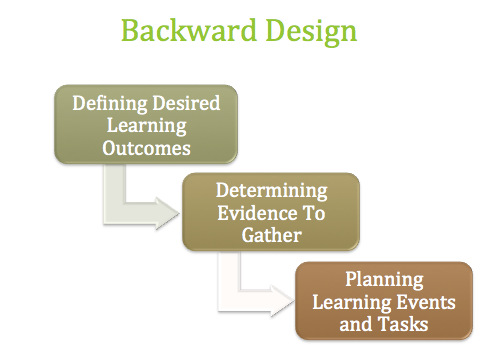
Figure 1: The Flow of Backward Design
The two main approaches I used to redesign my “Developmental Psychology” course included:
- flipping some (and then ultimately all) of my modules, and
- incorporating Team-Based Learning elements in my course gradually a semester later.
One of my biggest take-aways through the redesign process has been how intentional and reflective I have been about which parts of the flipped classroom pedagogy versus team-based learning to incorporate in order to fit my style as an instructor as well as the specific context in which the course occurs.
Elements to think about when redesigning a course using FC and TBL
Pre-class Preparation
To get started, it is important to note both FC and TBL have an emphasis on students getting acquainted with the basic content knowledge of a particular topic prior to coming to class. However, while a flipped classroom typically utilizes “online lectures”, there is not a specific or preferred way for how the content is delivered to students within a TBL approach, it is up to an instructor how they want to set up the “pre-class preparation”.
Many instructors have found it daunting to redesign and flip a course in its entirety all at once, which can truly be overwhelming and difficult to execute in reality. Deciding what requires “human touch” and interactions versus what can be “automated” is key. A feasible way to do this is to start by either recording online lectures on your own with a few topics or modules or find existing lectures online (flipped classroom approach) and then use TBL-type of “pre-class activities” for the remaining modules, which may include having the students:
- Take a multiple-choice questions quiz after watching the online lecture video on their own. I will go into more details below about how I explain the rationale of quizzes and the setup of our course.
- Read a designated portion of the chapter and list the five “big” questions or key concepts most relevant within the chapter.
- Make a visual or graphic organizer for content in the reading (e.g. a chart or list that organizes and categorizes ideas).
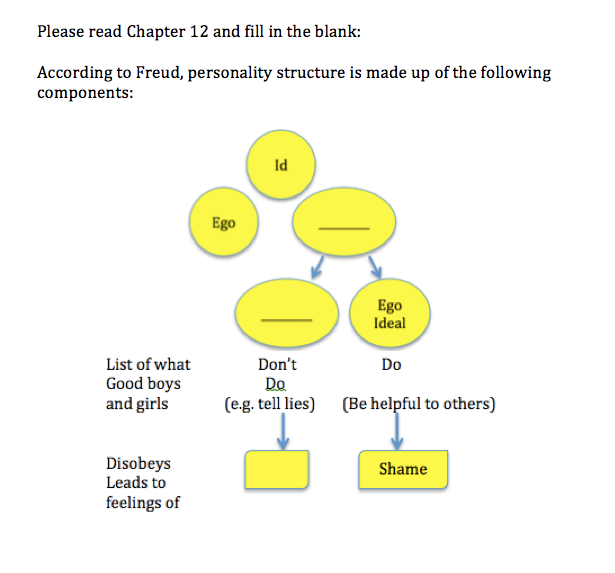
Figure 2: Example of a handout for students to “fill in the blank” after reading the text and listening to an online lecture on their own.
- Form a study group to discuss and record the main ideas of a topic.
Regardless of the format and HOW students prepare prior to coming to class, the main goal of having pre-class activities encourages students to have the fundamental knowledge beforehand, so the majority of class time can be dedicated to fostering teamwork, collaboration, critical thinking, real-life application activities. Therefore, being able to gain students’ buy-in from the start is extremely important to the success of the classroom for the remainder of the semester.
One way to eliminate student confusion and ensure accountability is to inform students of course structure and provide the rationale as to WHY we are using FC and TBL from the start. Often, on the first day of the semester, I will sell the students the benefits of a flipped classroom with the team-based approach by saying something along the lines of:
“Raise your hand if you ever been bored listening to a lecture and hope the professor can move on to the next concept already? Have you had the opposite experience where you have no idea what they are talking about and just wished they would explain it one more time in a different way? Or, raise your hand if the things you learned in the class did not feel relevant to everyday life or your future career? … Looks like many of you have had at least one if not, many of these experiences in a classroom at one point. My goal this semester is to help tailor this course to you as much as I can, one way to get started is to move the proportion of the lectures to outside the classroom and use class time for clarification of difficult concepts, or application of the concepts to everyday life.”
I usually follow the explanation with a video such as the one below on how a flipped classroom can help individualize learning to each student and additional benefits.
Typically after the “Flipped Classroom” video, I elaborate on what we would be spending class time doing instead of lectures using the following slide:
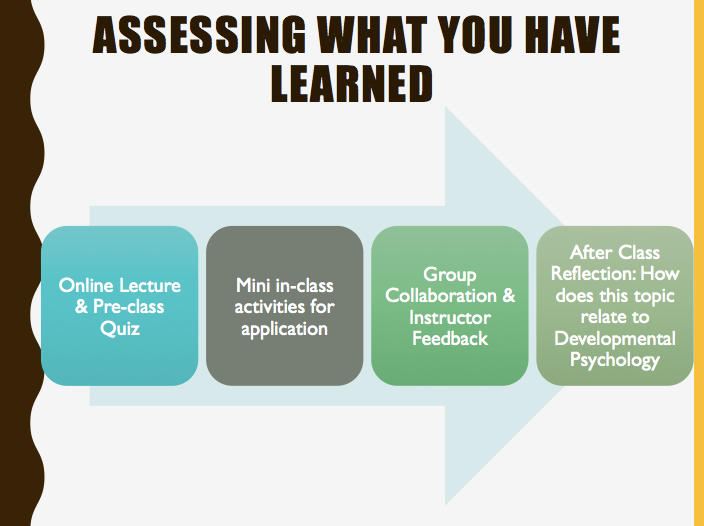
Figure 3: A screenshot of the PowerPoint slide with a visual flow of what a module typically looks like.
I try to normalize students’ resistance towards online lectures and pre-class quizzes by offering the following:
“I know that it can be daunting to have lectures online instead of what you might have been used to in the past with the traditional face-to-face lecture format. What I try to do in these videos to make them more user-friendly is to keep them short. Most of them will be between 10 to 15 minutes. You can review them as many times as you need, or skip over parts that you already know, which is something you can’t do during an in-person class. Many students who have taken the course in the past initially disliked the idea of being quizzed on prior to coming to class. Let me reassure you that as long as you follow the online lectures and any other instructions for each module, most of you should be able to easily answer the questions on the quiz. Let me show you in Canvas right now how the quizzes work and how to maximize your learning and scores. You get two attempts for each quiz, so the best way to approach these would be to first:
- Review the lectures and take notes at your own speed. Whenever I can, I will try to include a handout or study guide for each module to make note-taking even easier for you.,
- Attempt the quiz for the first time,
- As you review your quiz score, you can see what you already understand versus what might need more clarification,
- For each question that you get wrong, you can look for hints on what to review in the lecture and/or your textbook,
- Use your second attempt to try for a higher score, if you want!
What I try to typically do before our class is to review your scores and answers, if many of you get a certain question wrong, I can then spend a part of our class time going over those particular concepts.”
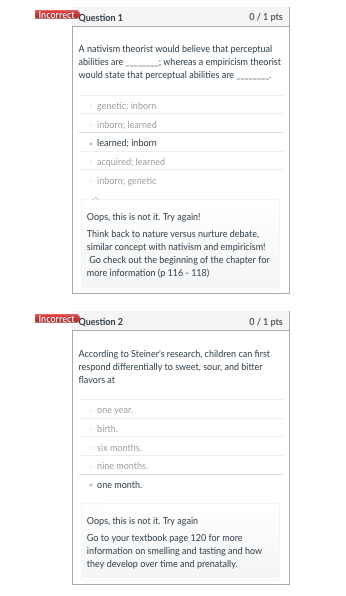
Figure 4: Screenshot example of Pre-class readiness assurance quiz from Canvas. For each quiz, students get two attempts. After their first attempt, they can review their answers as well as “hints” for what they might have missed and where they can go to review relevant material.
In-Class Activity
Below is an example of how the sequence or flow module is structured. I will use the “Perceptual Development” module as an example to illustrate my rationale for how I set up the flow.
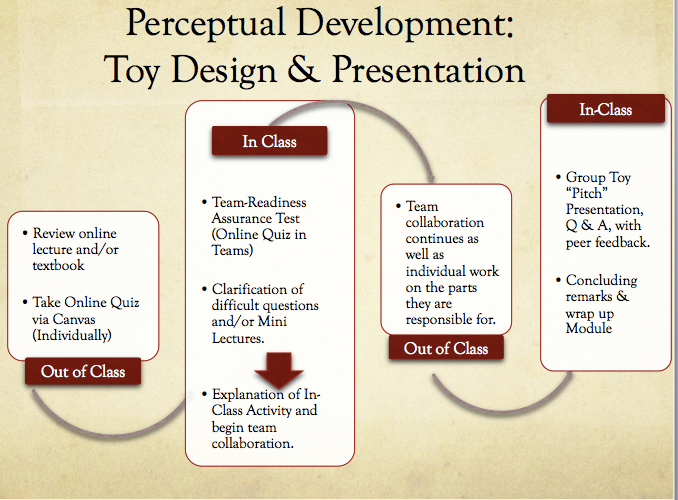
Figure 5: A screenshot of a PowerPoint slide from one of the modules. I typically present a slide like this to students, so they can visually see what to expect from them for that particular module and since it is uploaded on Canvas, they can refer back to it whenever they need.
Prior to coming to class, the students engage in reviewing the material and then take a quiz to ensure that they have acquired the basic knowledge for the module via a 10 multiple-choice-question quiz on their own, with the goal of keeping the individual accountable to prepare for their own learning. As my goal is not to “grill” the students, but rather to facilitate learning on their own, I do allow for two attempts on each individual quizzes (e.g. they can review their answers as well as my feedback to see which sections of the text and/or lecture they can review if they missed a question). Through students’ feedback, I have found that they tend to be more receptive to taking quizzes if it truly encourages learning and growth, and when it does not feel punitive. I also found that having individual quizzes prior to the classroom saves time and gives them time to sit with the material before having to re-engage with the topic again.
Then, when the students come to the classroom, they receive the same quiz again to take in the team format, this gives them the chance to refresh their memory on the material, for team members to ask questions to each other if they did not understand something when they took the individual quiz. I have seen that the team work on quizzes helps with encouraging collaboration between team members, encourages those who did not understand the material to ask their peers and for team members who already grasp the concept to practice explaining the concept in their own terms or using their own examples that might be more relatable. I have found during the process of the team quizzes, students are also willing to ask for help or further clarification if their whole team is unsure about a question; this way I can also get an overall sense of which questions (concepts) seem harder to grasp for this particular classroom community, as different groups struggle with different concepts. After each and every team submits their quiz, I quickly review the quizzes to see if there are additional materials to be reviewed and then clarify those concepts before we wrap up the assessment portion.
The next portion is the higher-level team-based learning activity that focuses more on the applied side. For example, when teaching about Perceptual Development, I have each team to first critique existing toys available on the market via a developmental lens (e.g. Are the suggested age on the package appropriate? What areas of development does it facilitate? What are ways you would improve the product if you would redesign it? How might you coach a parent to use this toy to better facilitate development for their child?) and then engage in their own toy design and come up with how they would present this as a pitch to a potential investor. This part allows the students to integrate their knowledge from the course to a real-life scenario and allow them to work individually and in teams to translate theory into action, be creative, and practice their verbal presentation skills.
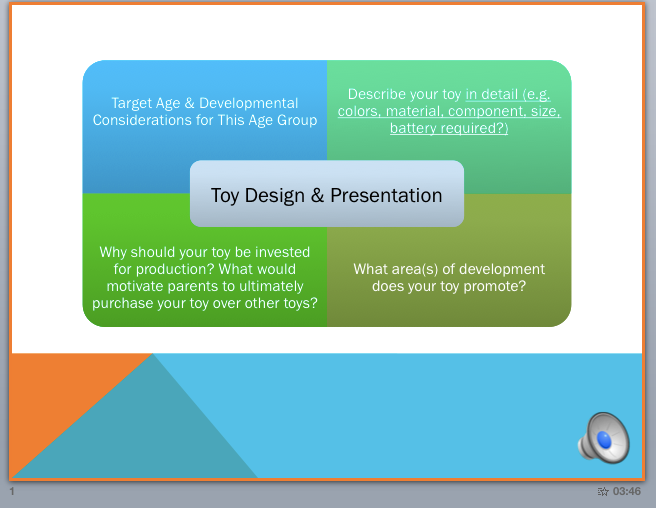
Figure 6: A Screenshot of the PowerPoint Slide with explanations of the various aspects of the activity. I typically also include a recording on the PowerPoint slide for team members who might not be present that day to review on their own and catch up with their team.
Finally, the last part of the module is the actual toy presentation. Team members are given the criteria on which they will be graded ahead of time and informed that they will receive both instructor and peer feedback (for the teams who are not presenting, their main task is to listen attentively; jot down questions they might have for the presenting team; and provide written feedback on strengths and growth edges of the team, their preparation on the toy design and presentation, as well as their persuasiveness). After each team has presented, I typically wrap up the module by sharing major themes that emerged through the presentations and relate their toy design back to developmental theories when applicable.
Concluding Remarks
After trying a blend of Flipped Classroom and Team-Based Learning, below are several insights that I have gained in the process of designing and redesigning:
- Intentionality: What I have found to be the most challenging and rewarding is the decision-making process of how intentionality to pick and choose from FC versus TBL when the two might differ or even contradict one another. For instance, a strictly FC allows individual students to go at their own pace and are given additional work or challenges when they have met the requirement, which is not always feasible to implement with teams. Also, even though students do benefit from staying in one consistent team throughout the semester, there are weeks that I still implement activities that are individually based such as the Collegiate Learning Assessment (CLA). What has helped me in designing and teaching in the classroom is asking myself the question of “What does this student/team needs right now and how would doing X help them later?” Through asking myself these questions, I am able to determine what strategy might work best for my students in the moment and can adjust the curriculum accordingly.
- Assessing what the students need and be flexible to throw out the plan if need be: I am a big proponent of giving individual and team feedback, so what I found after several iterations of the course is that my time has been “freed up” to attend to the needs of the individual students and teams. Also, note that each classroom is different depending on the student composition and their starting baseline, even when the instructor and the material stay relatively constant, so know that there are things that simply will not work well with some groups that have run smoothly with other cohorts before – that is O.K.! Remaining flexible, meeting them where they are, and ready to change in the moment if need be to get them where they need to go has been the key to maximizing success for each cohort.
- Balancing consistency with variety: While there are definite benefits to having a predictable routine (students know what to expect), things can get mundane quickly and it is easy to lose students’ interests and attention. What I have found to be useful in introducing a FC and TBL blended classroom, is to set up the basic flow and expectations for each module to be the same, while varying in how the students are assessed in their preparation and the activity that they do individually and in teams. For instance, while the majority of the pre-class preparations are quizzes, there are still ways to have variety in the format of the quizzes. Instead of having all multiple-choice quizzes, sometimes I will throw in an extra item to assess students’ understanding in essay questions or give them a figure or chart to interpret and explain. In other words, students know from day 1 that they will always have to complete something on their own prior to coming to class, but what they complete might vary slightly.
- Asking for students’ feedback on how the course is going: It is important that we not only give students feedback but also that we model how we receive feedback as instructors. As not all students have had prior exposure to FC and/or TBL, many tend to have reservations and uncertainties regarding how this type of classroom might impact their learning and performance. I also do not want to assume that transitioning from a traditional lecture classroom will be smooth sailing from the get-go for each student. Thus, it is important to periodically get feedback from students on how the classroom experience is for them, things that are going well, things they would like to see more of, and aspects of the course that have been difficult for them. I always preface to the students that I take feedback seriously and do use what I receive to the extent that is reasonable and possible given the circumstance.
- Believe in what you teach: For me, successful redesign depends partly on how we design and redesign the course in terms of format and content, while another major component is how much we believe in what we are doing. If I have doubts about these teaching methods, do it “halfway,” or am personally not excited about my classroom environment, my students will be able to see through that and will be negatively impacted. Thinking through the plan for a particular module ahead of time, being as organized and intentional as possible helps greatly in terms of preparation. When it comes time for the classroom, try letting go of the need for perfection, and simply have fun! There is always room for improvement, but what I have found is that students are very forgiving with little mishaps here and there, if we as instructors convey that we care and are willing to model that we are human.
Learn More
Additional Resources
As there is no one way to “flip” and use Team-based learning, finding different examples of how others have done it is a good way to get inspired:
Literature and Resources Available
Ahmed-Sarwar, N. (2015). Effective Use of Team Based Learning in a Flipped Classroom.
Della Ratta, C. B. (2015). Flipping the classroom with team-based learning in undergraduate nursing education. Nurse Educator, 40(2), 71-74.
Demetry, C. (2010, October). Work in progress—An innovation merging “classroom flip” and team-based learning. In Frontiers in Education Conference (FIE), 2010 IEEE (pp. T1E-1). IEEE.
Jakobsen, K. V., & Knetemann, M. (2017). Putting Structure to Flipped Classrooms Using Team-Based Learning. International Journal of Teaching and Learning in Higher Education, 29(1), 177-185.
Team-Based Learning as a Flipped Class in College of Pharmacy (http://www.crlt.umich.edu/team-based-learning-flipped-class-college-pharmacy)
Wallace, M. L., Walker, J. D., Braseby, A. M., & Sweet, M. S. (2014). ” Now, What Happens During Class?” Using Team-Based Learning to Optimize the Role of Expertise Within the Flipped Classroom. Journal on Excellence in College Teaching, 25.
References & Resources
Michaelsen, L. K., Knight, A. B., & Fink, L. D. (Eds.). (2002). Team-based learning: A transformative use of small groups. Greenwood publishing group.
Wallace, M. L., Walker, J. D., Braseby, A. M., & Sweet, M. S. (2014). ” Now, What Happens During Class?” Using Team-Based Learning to Optimize the Role of Expertise Within the Flipped Classroom. Journal on Excellence in College Teaching, 25.
Wiggins, G., & McTighe, J. (1998). What is backward design. Understanding by design, 1, 7-19.
About the Author

Chu-Chun Fu
Chu-Chun Fu is an assistant professor in Department of Psychology at Fayetteville State University in Fayetteville, NC. With the mindset of maximizing class time and preparing students for future career success, she began flipping her class in Spring 2016 and then later incorporating team-based learning teaching strategies in her undergraduate Developmental Psychology since 2017.